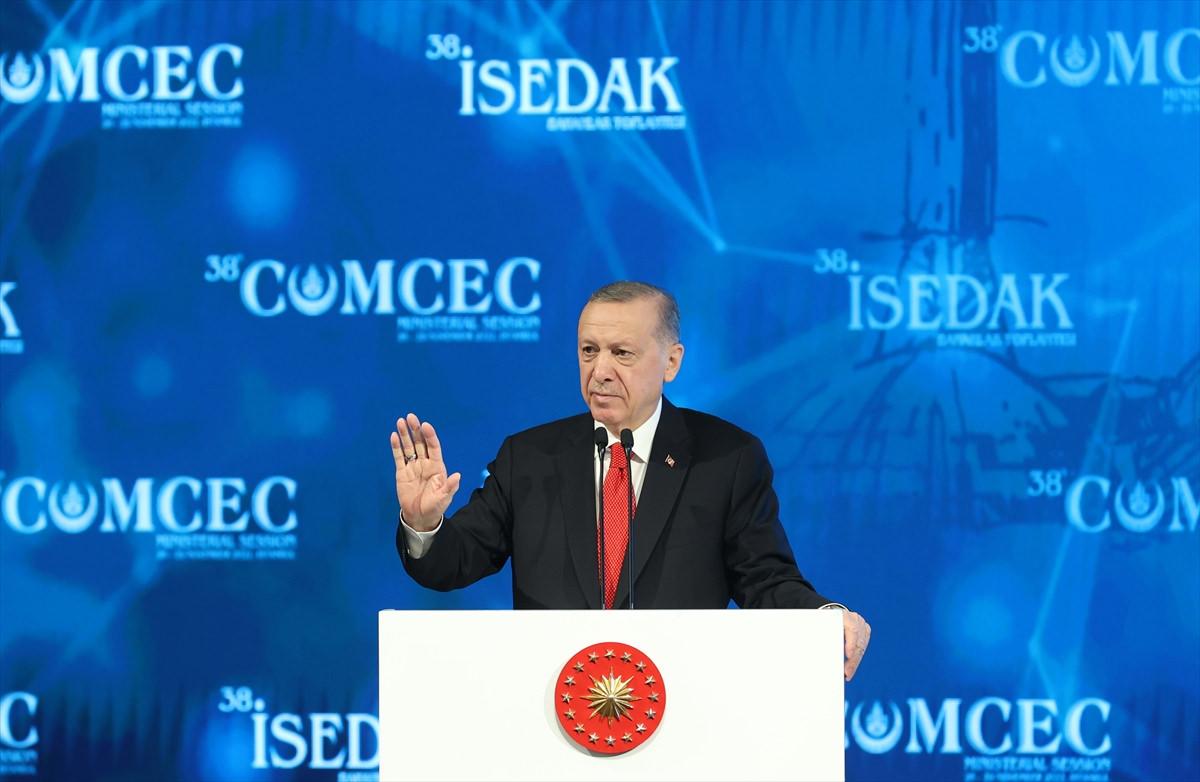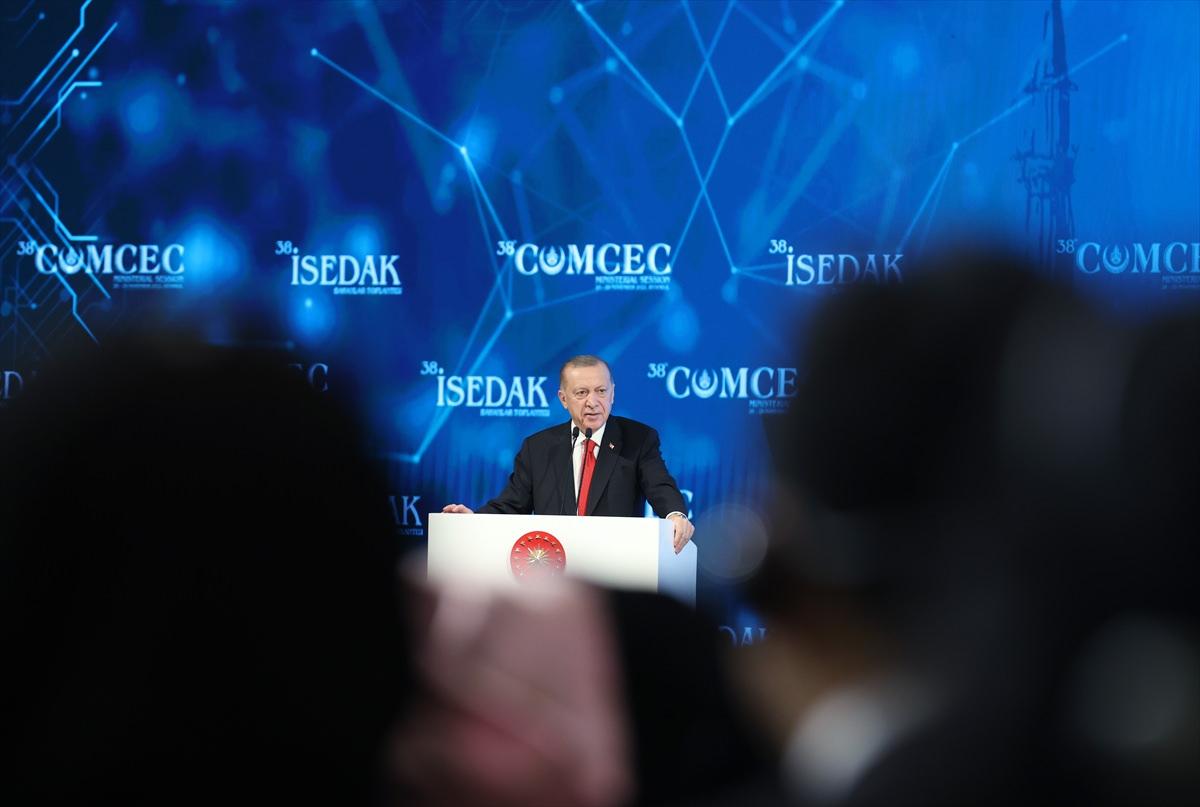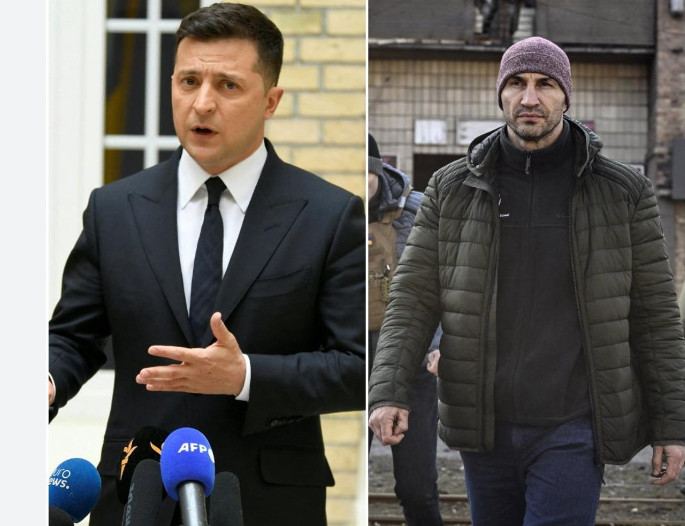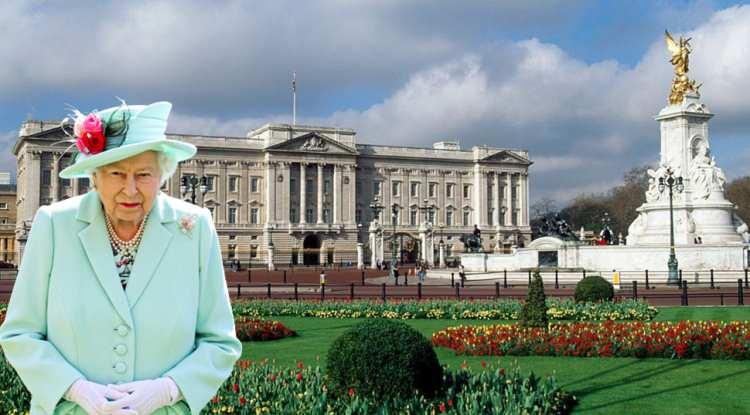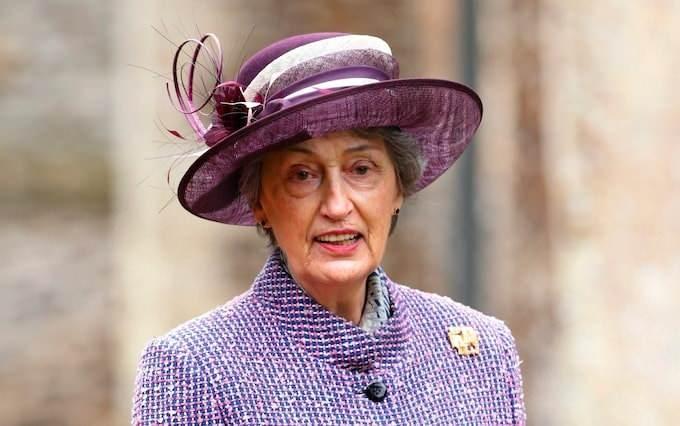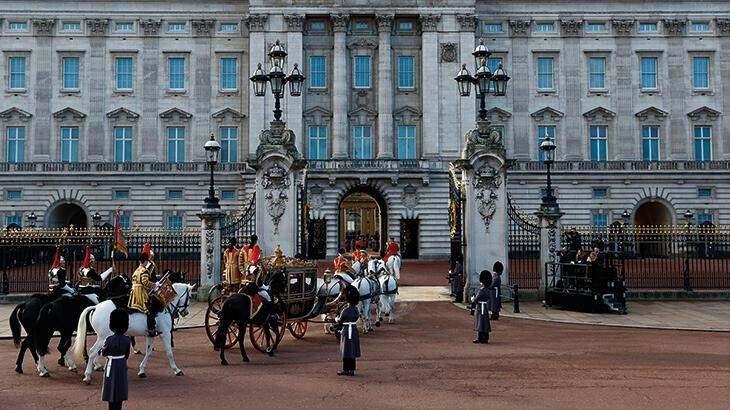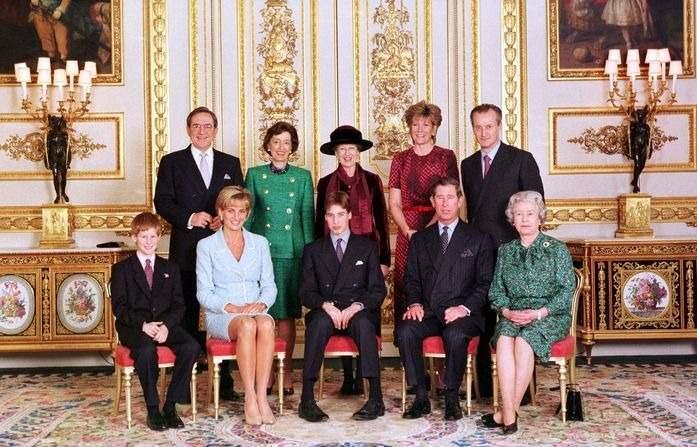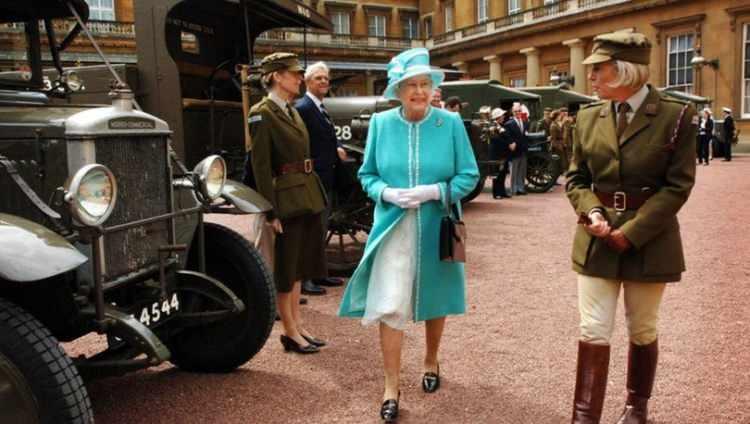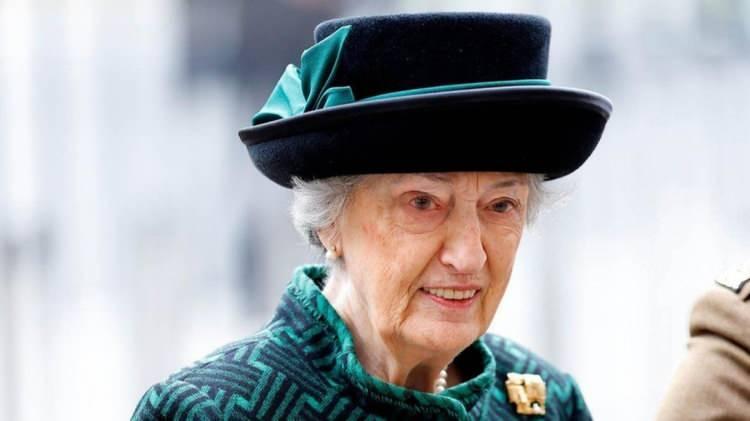ΗΜΕΡΟΛΟΓΙΟ!..
1.

US Knew for Weeks Islamic State Leader Was Dead
By Jeff Seldin November 30, 2022
Word from the Islamic State terror group that it had lost its second leader in less than a year came as no surprise to the United States, which had been aware of his demise for more than a month.
IS, also known as ISIS or Daesh, announced the death of Abu al-Hassan al-Hashimi al-Qurashi in a short audio statement Wednesday, with spokesman Abu Umar al-Muhajir saying, “He died fighting the enemies of God, killing some of them before being killed like a man on the battlefield.”
U.S. Central Command later issued its own statement, confirming Abu al-Hassan was killed in mid-October in Syria’s southern Daraa province by the Free Syrian Army (FSA), a rebel group that does not partner with the U.S.
BREAKING: US confirms death of #ISIS leader Abu al-Hassan al-Hashimi al-Qurashi during a Free Syrian Army operation in #Dar’a province in #Syria this past October pic.twitter.com/ABd3snI5FY
— Jeff Seldin (@jseldin) November 30, 2022
But despite the lack of American involvement in the operation, U.S. officials were quickly brought in to examine the results.
Based on evidence at the scene and subsequent DNA testing, the U.S. determined the FSA had in fact killed Abu al-Hassan, a U.S. defense official, speaking on the condition of anonymity in order to discuss the intelligence, told VOA.
The U.S. official did not say why the U.S. refused to confirm the IS leader’s death until now, nor have U.S. defense and intelligence officials explained how they were able to identify him though DNA, as Abu al-Hassan is not his real name but a nom de guerre.
Intelligence gathered by United Nation member states and published in July suggested Abu al-Hassan was most likely one of two people – Juma’a Awwad Ibrahim al-Badri, the brother of former IS leader Abu Bakr al-Baghdadi, or Abd al-Raouf al-Muhajir, who led the IS general directorate of provinces.
Other, earlier reports suggested Abu al-Hassan was Iraqi national Bashar Khattab Ghazal al-Sumaida’i, but Turkish officials confirmed in recent months that al-Sumaida’i as been in their custody since May, following a raid in Istanbul.
The London-based Syrian Observatory for Human Rights, a war monitoring group that was among the first to report on a series of FSA raids that led to the IS leader’s death, on Wednesday gave his real name as Abd Al-Rahman Al-Iraqi.
Regardless, U.S. officials welcomed the announcement of the IS leader’s death.
“We are pleased to see the removal of ISIS’ top leaders in such quick succession,” said White House press secretary Karine Jean-Pierre, noting the death of the group’s previous leader this past February.
“We will build on these counterterrorism successes,” she added. “We’ll keep that pressure on for sure.”
Abu al-Hassan’s death, while not at the hands of the U.S., is the latest in a series of heavy blows to the terror group’s leadership.
In addition to the death of Abu al-Hassan’s predecessor in February and the arrest of al-Sumaida’i in May, IS has lost at least five other senior officials in the past eight months.
Hani Ahmed al-Kurdi, a key leader for the group’s Syrian operations, was captured in a U.S. helicopter raid in June.
A U.S. drone strike in July killed Maher al-Agal, said to be the top IS official in Syria.
Then, in October, a U.S. raid in the northeastern Syria village of Qamishli killed Rakkan Wahid al-Shammri, a longtime IS operative and smuggler.
The U.S. followed up less than 24 hours later with an airstrike that killed two more top IS officials: Abu ‘Ala, described as one of the terror group’s “top five,” and Abu Mu’Ad al-Qahtani, the IS official responsible for prisoner affairs.
Even before the most recent operations targeting IS, U.S. officials had said the terror group had essentially been forced into survival mode by “a major talent loss in ISIS senior leadership.”
“[It] has caused them to focus on kind of branch expansion that has diffused the threat and, again, made the focus on the United States less acute than we had seen in prior years,” National Counterterrorism Center Director Christine Abizaid told a conference this past September.
The terror organization has also seen its ranks thin considerably. Intelligence estimates shared by the U.S. and by U.N. member states indicate IS has gone from commanding possibly upwards of 20,000 fighters in the months after the collapse of the last remnant of its self-declared caliphate in Syria, to overseeing perhaps as few as 6,000 across Syria and Iraq.
The task of leading IS now falls to Abu al-Hussein al-Husseini al-Qurashi, named as the group’s new emir in the same statement announcing Abu al-Hassan’s death.
“He is one of the veteran warriors and one of the loyal sons of the Islamic State,” said IS spokesman al-Muhajir.
According to JihadoScope, a company that monitors jihadi activity on social media, some IS followers have already began pledging their allegiance, or bay’ah, to the new leader.
In the past, IS followed the announcement of a new leader with social media campaigns showing followers around the world pledging their support.
2.

November 29, 2022
By Jim Garamone , DOD News
China Military Power Report Examines Changes in Beijing’s Strategy
The 2022 China Military Power Report lays out the challenges facing the United States military as it works to manage relations with the emerging superpower.
The report, released today, calls the Peoples’ Republic of China “the most consequential and systemic challenge to our national security and to a free and open international system.”
A senior defense official speaking on background said China is increasingly clear, in its ambitions and intentions. “It’s important to understand the contours of [Peoples’ Liberation Army] modernization to include their thinking about what the PLA’s way of war would look like, to kind of survey their current activities and modernizing capabilities and to assess their future military modernization goals,” he said to reporters prior to the release of the report.
The official said an important element of China’s strategy “is a determined pursuit to amass and expand its national power to transform — at least — aspects of the international system to make it more favorable to the PRC’s political system and its national interests.” This is a prime aspect of both domestic and foreign policy initiatives.
The official noted that as part of this, there is a trend of more coercive military behavior by China. “We’ve seen more coercive and aggressive actions in the Indo-Pacific region, including some of which we would highlight as being dangerous,” he said. This includes PLA ships and aircraft demonstrating unsafe and unprofessional behavior.
He noted that Secretary of Defense Lloyd J. Austin III specifically mentioned this in his meeting with his Chinese counterpart on the sidelines of the Association of Southeast Asian Nations Defense Ministers meeting in Cambodia last week.
Another element of China’s strategy is strengthening the PLA’s strategic deterrence capabilities. China defines this element broadly to include nuclear, space, cyber, electronic warfare, counterspace capabilities and more.
The official said the United States assesses that China has more than 400 operational nuclear warheads in its stockpile now. If this modernization effort continues, the Chinese could field about 1,500 warheads by 2035, he said.
The report also examines China’s “intensified” diplomatic, economic, political and military pressure against Taiwan. As part of this, the report also covers China’s efforts to conflate the U.S.’s One China Policy with the PRC’s own One China Principle. Chinese leaders do this to “erroneously portray broad international support for the PRC’s claims over Taiwan, and attempts to legitimize PRC coercive actions against Taiwan,” the official said.
The report is primarily a discussion of the military aspects of China, and it offers new insights on how the PLA views the future of warfare. “The PLA refers to ‘systems destruction warfare’ as the next way of war,” the official said. “They’ve also begun discussing a new operational concept for them: what they call a core operational concept … called multi-domain precision warfare.”
This new concept is intended to help identify key vulnerabilities in an adversary’s operational system, and then to launch precision strikes against those vulnerabilities, he said. These could be kinetic or non-kinetic. “Basically, it’s a way that they’re thinking about looking across domains to identify vulnerabilities in an adversary’s operational system and then to exploit those to cause its collapse,” the official said.
The report also addresses topics that illuminate the strategic thinking of Chinese leaders in strategic stability, China’s views on information and information dominance, and what the PLA is thinking about expanded military diplomacy, the official said.
One key theme is China “wants its economic and political and social and military and security developments to be coordinated and mutually reinforcing, and to support the ambitious objectives that Xi Jinping has laid out for national rejuvenation by 2049,” the official said. The report looks at China’s military modernization and defense strategy, but also looks at elements of China’s economic policy and foreign policy, “and how these all kind of fit together with the military and defense modernization in pursuit of its regional and global ambitions,” the official said.
Specifically, this addresses China’s military-civil fusion development strategy. The report says Beijing seeks to develop and acquire advanced dual-use technology for its military, while also serving a broader purpose to strengthen all of the PRC’s instruments of national power.
China is also growing its national industrial and technological base. “in terms of kind of broader defense ambitions, the PRC has a strategy that entails strengthening and adapting its armed forces to what it views as kind of long-term trends and global military affairs,” the official said. “As an outcome of the 20th Party Congress [in October], Beijing is focusing on intensifying and accelerating the PLA’s modernization goals over the next five years, including strengthening what they refer to as its system of strategic deterrence.”
The report details China’s regional and global ambitions. “As we noted in last year’s report, Xi Jinping and the PRC leadership are determined that the armed forces should take a more active role in advancing the PRC’s foreign policy goals globally,” the official said.
The Chinese military is pursuing overseas bases and logistics facilities. This would allow the PLA to project and sustain military power at much greater distances from its borders.
The report stresses that there is a potential for misunderstanding and miscalculation. “That kind of emphasizes the importance of effective and timely communications between the Department of Defense and the PLA,” the official said. “Strategic competition — even as strategic competition intensifies — doesn’t mean that confrontation or conflict is inevitable or unavoidable. And we’ve been clear that we’re committed to responsibly managing the competition with the PRC to try to ensure that it doesn’t veer into conflict unnecessarily.”
3.
Secretary General welcomes US Secretary of State to meeting of NATO Foreign Ministers

Mr Stoltenberg thanked Secretary Blinken for his personal leadership and the US’ strong economic and military support for Ukraine. “We need to stand together because it is in our security interest to ensure that President Putin doesn’t win, because that will send the message that authoritarian leaders can get their way by using brutal military force,” said the Secretary General.
4.
NATO’s flagship cyber defence exercise kicks off in Estonia
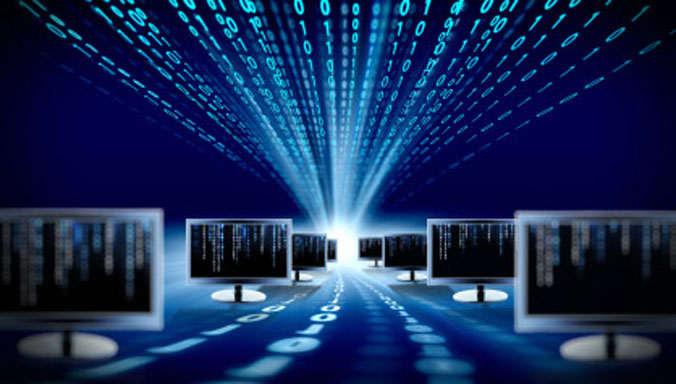
Cyber Coalition 22 provides a unique platform for collaboration, experimentation, sharing of experience, and developing best practices. By working together, individual participant – as well as their organisations, nations and NATO – enhance their cyber resilience.
Cyber Coalition is a long-planned NATO exercise, and has taken place annually since 2008. It takes place in Tallinn, Estonia, as well as remotely, from national capitals and other locations.
Cyber defence is a core task of NATO’s collective defence. At the Madrid Summit in June 2022, NATO Allies committed to further their efforts to enhance their cyber defence capabilities, as well as their cooperation with the industry and other key stakeholders such as the EU.
5.
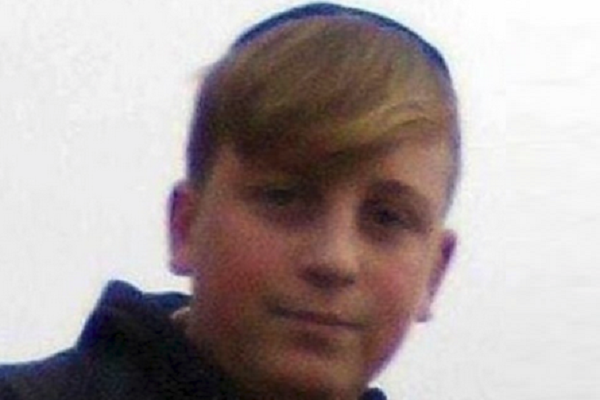
Precious Soul: Young Victim of Palestinian Bombing Laid to Rest in Jerusalem
By TPS, JNS and WIN Staff
Hundreds of people attended the funeral of Aryeh Schupak, a yeshiva student killed in the Wednesday morning terror attack.
The funeral was held in the Boston Synagogue of Jerusalem’s Har Nof neighborhood. He was laid to rest at the nearby Har HaMenuchot Cemetery.
A pair of bombs blew up within minutes of each other at bus stops near the entrance to Jerusalem.
One detonated near the Central Bus Station, the other at a bus stop by the Ramot Junction known by locals as the “Trampiada.”
Schupak, a student at a yeshiva in Moshav Beit Meir, was at the Trampiada waiting for a ride when a bomb exploded.
“I am sending condolences on behalf of all citizens of Israel to the family of Aryeh Schupak who was killed today in the terrible terrorist attack. May his memory be for a blessing,” Israeli Prime Minister-designate Benjamin Netanyahu tweeted.
Prime Minister Yair Lapid convened a security meeting on Wednesday attended by, among others, Defense Minister Gantz, Israel Police Commissioner Kobi Shabtai, Israel Security Agency (Shin Bet) chief Ronen Bar and Public Security Minister Omer Bar-Lev.
“I would first like to send my condolences and the condolences of the government of Israel to the family of Aryeh Shechopek, of blessed memory. He was a boy who never wronged anyone in the world, and he was murdered simply because he was Jewish. I also wish a speedy and full recovery to the wounded,” said Lapid following the meeting.
6. 
7. Pençe-Kılıç Hava Harekatı sonrası Yunanistan’dan Türkiye itirafı: Büyük hata olur
TSK’nın Suriye ve Irak’ın kuzeyinde terör hedeflerine yönelik başlattığı hava harekatı Yunan medyasında büyük yankı buldu. “15 Temmuz sonrası ‘Türk Hava Kuvvetleri zayıflıyor’ iddiasını kabul etmek büyük hata olur” ifadeleri yer aldı.
Yunan medyasında Türkiye’nin “Pençe-Kılıç Hava Harekatı”nda gösterdiği kabiliyet masaya yatırıldı. 15 Temmuz FETÖ darbe girişimi sonrası ortaya atılan ‘Türk Hava Kuvvetleri zayıflıyor’ iddiasının gerçek olmadığını yazan Yunan medyası, ‘Rakibini hafife almak büyük bir hatadır ve Yunanistan’da birçok insan bu hataya düşüyor’ ifadelerini kullandı.
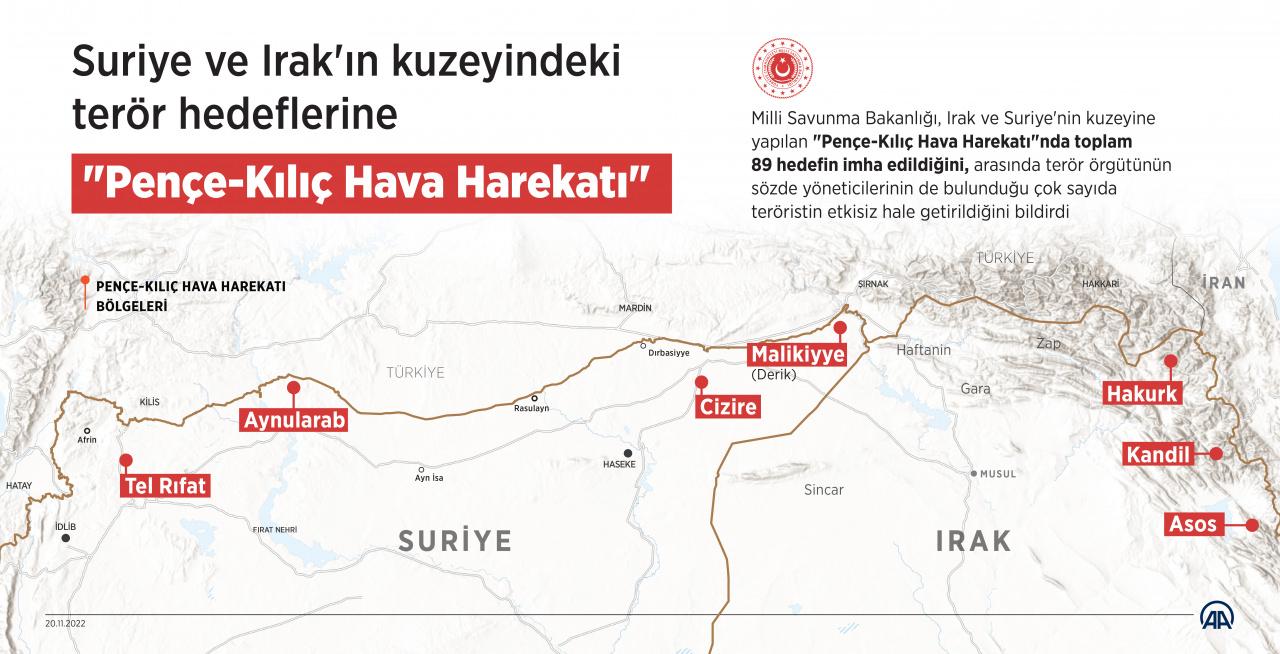
“TÜRKIYE’NİN ULUSLARARASI ALANDA TECRİT EDİLDİĞI İDDİLARI ÇÜRÜMÜŞ OLUYOR”
Analiz yazısında Yunanistan’daki kitle iletişim araçlarını elinde bulunduran yabancı sermayelere tepki gösterildi. Yunan Hükümeti’nin her duyurusuna inanılmasını “olağanüstü bir kolaylık” olarak nitelendirildi.
Beyaz Saray Ulusal Güvenlik Konseyi Stratejik İletişim Direktörü John Kirby’nin Türkiye’nin düzenlediği hava harekatına ilişkin yaptığı açıklamada Türkiye’nin kendisini savunma hakkının olduğunu dile getirmesi analiz yazısında geniş yer buldu. Haberde, “Bu açıklama, Türkiye’nin uluslararası alanda tecrit edildiği veya Ankara’nın Washington ile ilişkilerinin kesin bir şekilde bozulduğu (yukarıda bahsi geçen medya dahil) iddialarını çürütüyor” ifadeleri yer aldı.
Uluslararası ilişkilerin dinamik olduğu ve Yunanistan’ın sık sık başvurduğu “uluslararası hukuk”un ise zamanın koşullarına göre değişebileceği aktarıldı.
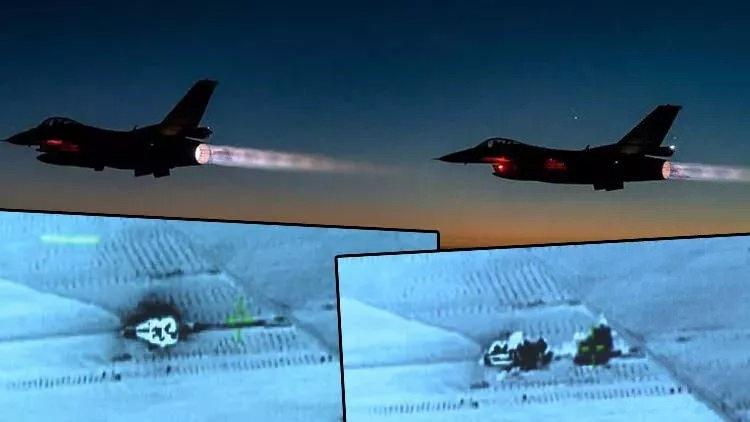
“TÜRKİYE’Yİ HAFİFE ALMAK BÜYÜK BİR HATA”
Türkiye’nin terör hedeflerine yönelik yürüttüğü hava harekatları örnek gösterilirken 15 Temmuz 2016’daki FETÖ darbe girişiminin ardından Türk Hava Kuvvetleri’nin zayıfladığı iddiasının sahadaki gerçeklikle uyuşmadığı belirtildi.

Analiz yazısında şu ifadeler yer aldı; Tam 39 gün sonra “Fırat Kalkanı” adı verilen geniş çaplı bir harekât gerçekleştirdiler. Rakibini hafife almak büyük bir hatadır ve Yunanistan’da birçok insan bu hataya düşüyor.

Hellenic Defence Systems’e (EAS) bağlı fabrikanın kapatılması nedeniyle Atina hükümetine tepki gösterilirken, Yunan milli savunma politikasının yetersiz olduğu dile getirildi.
11. TO ΠΑΡΑΚΑΤΩ, Ο ΧΙΟΣ ΤΟ ΠΗΡΕ ΑΠΟ ΤΟ “ΝΤΟΚΟΥΜΕΝΤΟ” ΤΟΥ ΣΥΝΕΡΓΑΤΗ ΚΑΙ ΟΜΟΣΤΑΒΛΟΥ* ΤΟΥ ΠΙΑ, ΒΡΩΜΕΡΟΥ ΜΠΑΞΕΒΑΝΗ!
[* ΕΧΟΥΝ ΚΑΙ ΟΙ 2 ΤΟΝ “ΖΟΥΓΚΛΙΕΡΗ” ΕΡΓΟΔΟΤΗ ΚΑΙ “ΠΑΙΖΟΥΝ” ΚΑΙ(!) ΓΙΑ ΤΑ ΣΥΜΦΕΡΟΝΤΑ ΤΟΥ, ΣΤΟ ΠΛΑΙΣΙΟ ΤΗΣ ΣΙΧΑΜΕΡΗΣ ΣΥΜΜΑΧΙΑΣ ΜΑΥΡΩΝ ΚΑΙ ΚΟΚΚΙΝΩΝ ΧΟΥΝΤΑΙΩΝ, ΟΠΩΣ ΣΑΣ ΕΧΟΥΜΕ ΠΕΙ ΚΑΙ ΕΞΗΓΗΣΕΙ]!
ΒΛΕΠΕΤΕ ΛΟΙΠΟΝ ΤΟ ΠΟΣΟ ΒΡΩΜΕΡΗ ΟΧΙΑ ΕΙΝΑΙ Ο ΧΙΟΣ, ΤΟΥ ΟΠΟΙΟΥ Η ΓΥΝΑΙΚΑ**, ΣΗΜΕΙΩΣΤΕ ΤΟ ΑΥΤΟ, ΠΡΕΠΕΙ ΝΑ ΥΠΗΡΕΤΕΙ ΑΚΟΜΑ ΣΤΗΝ ΕΥΠ!..
(** ΓΙΑΤΙ ΝΑ ΕΧΟΥΜΕ ΕΜΕΙΣ ΠΡΟΒΛΗΜΑ ΝΑ ΠΟΥΜΕ ΓΙΑ ΤΗΝ ΚΑ… ΧΙΟΥ, ΟΤΑΝ ΑΥΤΟ ΤΟ ΤΣΟΓΛΑΝΙ ΚΑΙ Ο ΟΜΟΣΤΑΒΛΟΣ ΤΟΥ ΚΟΚΚΙΝΟΦΑΣΙΣΤΑΣ ΔΙΝΟΥΝ ΒΟΡΑ ΣΤΙΣ ΞΕΝΕΣ ΥΠΗΡΕΣΙΕΣ ΠΡΟΣΩΠΑ ΤΗΣ ΕΥΠ ΑΝΑΦΕΡΟΝΤΑΣ-ΤΑ ΜΕ ΤΑ ΟΝΟΜΑΤΕΠΩΝΥΜΑ ΤΟΥΣ! ΑΠ’ ΑΥΤΟ ΚΑΙ ΜΟΝΟΝ ΜΠΟΡΕΙΤΕ ΝΑ ΚΑΤΑΛΑΒΕΤΕ ΤΟ ΠΟΣΟ ΠΑΤΡΙΩΤΕΣ ΕΙΝΑΙ ΑΥΤΑ ΤΑ ΦΑΣΙΣΤΑΡΙΑ, Ο ΧΡΥΣΑΥΓΙΤΗΣ ΧΙΟΣ ΚΑΙ Ο ΣΥΡΙΖΑΙΟΣ ΜΠΑΞΕΒΑΝΗΣ, ΑΛΛΑ ΚΑΙ ΠΟΣΟ ΒΡΩΝΙΑΡΗΣ, ΥΠΟΥΛΟΣ ΚΑΙ ΕΚΔΙΚΗΤΙΚΟΣ ΕΙΝΑΙ Ο ΧΕΙΡΙΣΤΗΣ ΤΟΥΣ ΚΑΙ ΕΓΚΕΦΑΛΟΣ ΤΗΣ ΟΛΗΣ ΙΣΤΟΡΙΑΣ ΤΩΝ ΥΠΟΚΛΟΠΩΝ, ΤΕΩΣ ΠΡΑΚΤΟΡΑΣ ΤΗΣ ΕΥΠ ΚΑΙ ΣΥΓΧΡΟΝΟΣ… “ΗΡΩΑΣ”)!
ΤΟ ΠΙΟ ΘΛΙΒΕΡΙΟ ΟΜΩΣ ΑΠ’ ΟΛΑ ΕΙΝΑΙ Η ΑΚΟΛΟΥΘΟΥΣΑ ΟΛΩΝ ΤΩΝ ΠΑΡΑΠΑΝΩ ΔΙΑΠΙΣΤΩΣΗ ΟΤΙ Η “ΕΥΠ” ΚΑΤΕΣΤΗ ΑΠΟ ΤΑ ΚΟΜΜΑΤΑ ΕΝΑ “ΚΟΛΟΧΑΝΕΙΟ” ΠΙΑ, ΣΤΟ ΟΠΟΙΟ ΑΛΛΗΛΟΣΠΑΡΑΣΣΟΝΤΑΙ ΤΑ ΜΕΛΗ ΤΗΣ, ΚΑΘΩΣ ΚΑΙ ΤΟ ΟΤΙ ΑΚΟΜΑ ΥΠΗΡΕΤΟΥΝ Σ’ ΑΥΤΗΝ ΧΟΥΝΤΙΚΟΙ ΚΑΙ ΟΡΘΟΤΕΡΑ ΓΟΝΟΙ ΤΟΥΣ!..
ΕΙΝΑΙ ΠΟΛΥ ΚΡΙΜΑ, ΔΙΟΤΙ ΗΤΑΝ ΠΟΛΥ ΜΕΓΑΛΗ ΕΥΚΑΙΡΙΑ, ΤΩΡΑ ΕΠΙ Κ.Κ.Μ. ΠΟΥ ΑΠΕΔΕΙΞΕ ΟΤΙ ΕΧΕΙ ΠΟΛΥ ΜΥΑΛΟ ΚΑΙ ΚΡΙΣΗ, ΝΑ “ΣΤΗΝΟΤΑΝ” ΕΞ ΑΡΧΗΣ ΤΟ ΥΠΟΨΗ “ΜΑΓΑΖΙ”!
(ΑΝ ΓΙΝΟΤΑΝ ΚΑΤΙΟ ΤΕΤΟΙΟ, ΘΑ ΕΠΡΟΚΕΙΤΟ ΙΣΩΣ ΓΙΑ ΤΗΝ ΜΕΓΑΛΥΤΕΡΗ ΜΕΤΑΡΡΥΘΜΙΣΗ ΣΤΟ ΔΗΜΟΣΙΟ ΚΑΙ ΕΙΔΙΚΟΤΕΡΑ ΣΤΟΝ ΤΟΜΕΑ ΤΗΣ “ΕΘΝΙΚΗΣ ΑΣΦΑΛΕΙΑΣ”). ΕΜΕΙΣ ΑΠ’ ΕΔΩ ΕΓΚΑΙΡΑ (ΟΤΑΝ ΣΤΗΝ ΑΡΧΗ ΤΗΣ ΝΔ / ΤΟΥ Κ.Κ.Μ. ΣΤΗΝ ΕΞΟΥΣΙΑ ΕΙΧΕ “ΠΑΙΞΕΙ” ΤΟ ΘΕΜΑ “ΕΥΠ” ΕΙΧΑΜΕ ΓΡΑΨΕΙ ΚΑΙ ΓΙ΄ΑΥΤΟ ΣΧΕΤΙΚΑ, ΟΠΩΣ ΕΙΧΑΜΕ “ΑΠΕΥΘΥΝΘΕΙ” ΤΟΤΕ ΚΑΙ ΠΡΟΣ ΤΟΝ ΚΟ ΚΟΝΤΟΛΕΟΝΤΑ)!..
ΚΡΙΜΑ, ΠΟΛΥ ΚΡΙΜΑ, ΑΝ ΚΑΙ… “ΠΟΤΕ ΔΕΝ ΕΙΝΑΙ ΑΡΓΑ”!
ΔΙΑΒΑΣΤΕ! (ΟΣΟΙ ΕΙΣΤΕ ΣΧΕΤΙΚΟΙ ΜΕ ΤΟ ΑΝΤΙΚΕΙΜΕΝΟ “ΠΛΗΡΟΦΟΡΙΕΣ” ΘΑ ΑΝΤΙΛΗΦΘΕΙΤΕ ΑΠΟ ΤΗΝ 1Η ΚΙΟΛΑΣ ΠΑΡΑΓΡΑΦΟ ΤΟΥ ΑΡΘΡΟΥ ΑΥΤΟΥ, ΤΟ ΠΟΣΟ ΒΡΩΜΙΚΑ ΕΧΕΙ ΓΡΑΦΤΕΙΚΑΙ ΚΥΡΙΩΣ ΤΟ ΠΟΣΟ ΠΡΟΣΕΧΤΙΚΑ… ΜΠΕΡΔΕΜΕΝΑ)!..
-/-
Η “ΒΑΓΓΕΛΙΤΣΑ” ΠΟΥ ΕΛΥΝΕ ΚΑΙ ΕΔΕΝΕ ΣΤΗΝ ΕΥΠ – “ΚΛΕΙΔΙ” ΟΙ 50 ΑΣΤΥΝΟΜΙΚΟΙ ΠΟΥ ΕΙΧΕ ΣΤΙΣ ΔΙΑΤΑΓΕΣ ΤΗΣ ΚΑΙ ΕΠΕΣΤΡΕΨΑΝ ΣΤΗΝ ΕΛΑΣ ΜΟΛΙΣ ΞΕΣΠΑΣΕ ΤΟ ΣΚΑΝΔΑΛΟ ΜΕ ΤΙΣ ΠΑΡΑΚΟΛΟΥΘΗΣΕΙΣ
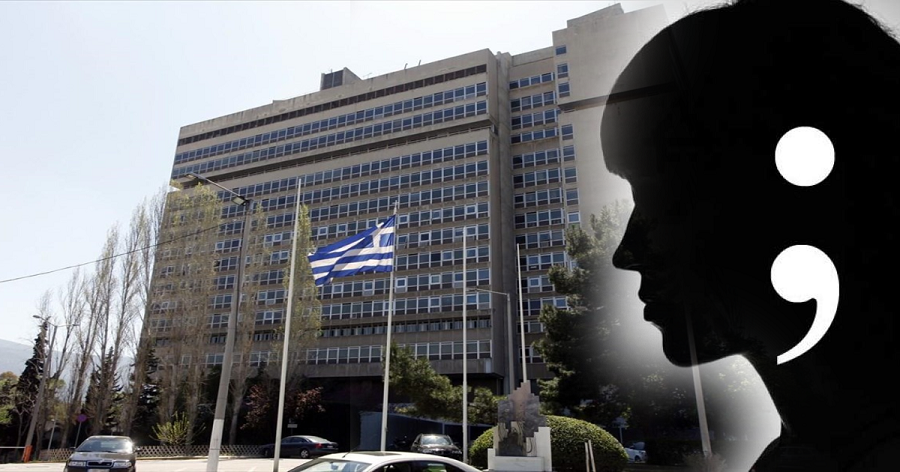
Πρόσωπο-κλειδί στο σκάνδαλο των υποκλοπών είναι η πρώην επικεφαλής της Διεύθυνσης Συλλογής και Ανάλυσης Πληροφοριών και Β’ υποδιευθύντρια Τρομοκρατίας και Οργανωμένου Εγκλήματος της ΕΥΠ Ευαγγελία Γεωργακοπούλου. Πρόκειται για αξιωματικό της ΕΛΑΣ η οποία κατά το παρελθόν έχει υπηρετήσει σε νευραλγικές θέσεις στην αστυνομία. Η «Βαγγελίτσα», όπως την αποκαλούν στην ΕΥΠ, που «έκοβε και έραβε» στην υπηρεσία, φέρεται να είναι το πρόσωπο που έχει υπογράψει τις επίμαχες επισυνδέσεις. Εκτός από την ίδια, κομβικό ρόλο στο σκάνδαλο των υποκλοπών έχουν και οι 50 αστυνομικοί που αποσπάστηκαν από την ΕΛΑΣ στην ΕΥΠ επί κυβέρνησης Μητσοτάκη, λίγο μετά την ανάληψη της ευθύνης της ΕΥΠ από τον ίδιο τον πρωθυπουργό, οι οποίοι τους τελευταίους μήνες επέστρεψαν άρον άρον στην ΕΛΑΣ.
Στον ρόλο της «Βαγγελίτσας» στις υποκλοπές έχουν αναφερθεί εδώ και μήνες όχι μόνο το Documento αλλά και εφημερίδες όπως το «Βήμα» και τα «Νέα». Ωστόσο μέχρι και σήμερα δεν φαίνεται να έχει εξεταστεί από τους εισαγγελείς, όπως δεν έχουν εξεταστεί ούτε οι αστυνομικοί που τελούσαν υπό τις διαταγές της, καθώς αν και οι πληροφορίες λένε ότι έχει ήδη κληθεί, η ίδια έχει επικαλεστεί επανειλημμένα ασθένεια προκειμένου να μην προσέλθει ως μάρτυρας. Την ίδια δικαιολογία είχε χρησιμοποιήσει προκειμένου να μην προσέλθει και σε ακρόαση από την ΑΔΑΕ. Η έρευνα έχει ήδη καθυστερήσει από τις εισαγγελικές αρχές, ενώ δεν έχει ανοίξει η παλέτα των αδικημάτων που διερευνούν.
Η Ευαγγ. Γεωργακοπούλου έχει υπηρετήσει σε νευραλγικές θέσεις όπως στη Δίωξη Ναρκωτικών δίπλα σε ισχυρές προσωπικότητες της ΕΛΑΣ. Αν και υποδιευθύντρια Τρομοκρατίας και Οργανωμένου Εγκλήματος της ΕΥΠ, φέρεται σύμφωνα με πληροφορίες του Documento να έλυνε και να έδενε στην υπηρεσία σαν να ήταν το πρώτο και μοναδικό βιολί.
Δημοσίευμα του «Βήματος» με τίτλο «Υποκλοπές: Το “τρίγωνο” που εγκατέστησε το Predator στην Υπηρεσία Πληροφοριών και η λίστα των “χειριστών” του» φωτογράφιζε τον ρόλο της Γεωργακοπούλου στις παρακολουθήσεις και περιέγραφε τον τρόπο λειτουργίας της ομάδας του Predator. Κατά το «Βήμα» η ομάδα είχε εγκατασταθεί και λειτουργούσε κυρίως την περίοδο 2020-22 στις εγκαταστάσεις της ΕΥΠ στην Αγία Παρασκευή και συγκεκριμένα στο νεοσύστατο Κέντρο Τεχνολογικής Υποστήριξης, Ανάπτυξης και Καινοτομίας (ΚΕΤΥΑΚ).
Εκεί είχαν αποσπαστεί επί κυβέρνησης Μητσοτάκη μια σειρά αστυνομικοί, κυρίως από την Υποδιεύθυνση Δίωξης Οργανωμένου Εγκλήματος της Ασφάλειας Αττικής και άλλες υπηρεσίες, οι οποίοι ανέρχονταν σε περίπου 50. Το «Βήμα» παρέθετε μάλιστα και ονόματα αστυνομικών όπως οι Χρήστος Χ., Ηλίας Κ., Παναγιώτης Τ., Ιωάννης Γρ., Κώστας Π. Η Ευαγγ. Γεωργακοπούλου φωτογραφιζόταν ως προϊσταμένη της ομάδας χωρίς να κατονομάζεται, με 15 από τους 50 αστυνομικούς να αποτελούν τον βασικό πυρήνα της ομάδας της. Σύμφωνα με το δημοσίευμα, οι αστυνομικοί αυτοί φέρονται να είχαν εκπαιδευτεί την περίοδο 2019-20 στη χρήση του Predator από Ισραηλινούς που είχαν έλθει από την Κύπρο.
Την ίδια περίοδο (2020-21) η κυβέρνηση Μητσοτάκη επιδόθηκε σε ένα άνευ προηγουμένου πογκρόμ εκκαθαρίσεων από την ΕΥΠ όσων υπαλλήλων δεν ήταν αρεστοί. Ηταν Ιούλιος του 2020 όταν η κυβέρνηση με τροπολογία μετέφερε τη Διεύθυνση Ηλεκτρονικών Πληροφοριών (ΔΗΠ) της ΕΥΠ στο Γενικό Επιτελείο Εθνικής Αμυνας (ΓΕΕΘΑ) και στη θέση της συστάθηκε μια υποδιεύθυνση στην οποία μεταφέρθηκαν 150 πολιτικοί υπάλληλοι της ΕΥΠ. Το θέμα είχε πάρει πολιτικές διαστάσεις, με τον τότε τομεάρχη Προστασίας του Πολίτη του ΣΥΡΙΖΑ και βουλευτή Β΄ Πειραιά Γιάννη Ραγκούση να κάνει λόγο για «σκανδαλώδη τροπολογία». Την οργή του είχε εκφράσει όμως και ο σύλλογος υπαλλήλων της ΕΥΠ. Οπως ανέφερε σε σχετική ανακοίνωση, «η μετακίνηση της ΔΗΠ στον στρατό είναι πισωγύρισμα και ανιστόρητη ενέργεια».
Το πογκρόμ των διώξεων συνεχίστηκε. Η νέα υποδιεύθυνση μεταφέρθηκε στην αρμοδιότητα της ΕΛΑΣ μαζί με τους υπαλλήλους της ΕΥΠ. Τον Δεκέμβριο του 2021 οι 150 υπάλληλοι έλαβαν φύλλα πορείας για την ΕΛΑΣ.
Στο μεταξύ τον περασμένο Αύγουστο και η Ευαγγ. Γεωργακόπουλου επέστρεψε στην ΕΛΑΣ, συγκεκριμένα στο υποδεέστερο τμήμα Αθλητικής Βίας. Λίγες μέρες πριν είχε έρθει στην επιφάνεια το σκάνδαλο της παρακολούθησης του προέδρου του ΚΙΝΑΛ Νίκου Ανδρουλάκη, ενώ ήδη βρίσκονταν σε εξέλιξη εισαγγελικές έρευνες για τις παρακολουθήσεις των δημοσιογράφων Θανάση Κουκάκη και Σταύρου Μαλιχούδη. Κατά τις ίδιες πληροφορίες η Ευαγγ. Γεωργακοπούλου είναι αυτή που φέρεται να είχε υπογράψει τις επίμαχες επισυνδέσεις. Δεν είναι τυχαίο άλλωστε ότι η «Βαγγελίτσα» είχε προταθεί από το ΚΙΝΑΛ ως μάρτυρας στην εξεταστική επιτροπή της Βουλής. Τη μετακίνηση της Γεωργακόπουλου είχε αναδείξει σε δημοσίευμά της τόσο η εφημερίδα «Καθημερινή» όσο και το Documento.
Μετά την απομάκρυνση μάλιστα της Γεωργακοπούλου σταδιακά και μέχρι τον περασμένο Σεπτέμβρη και οι 50 αστυνομικοί που είχαν αποσπαστεί στην ΕΥΠ επέστρεψαν στην ΕΛΑΣ. Καλά πληροφορημένες πηγές χαρακτηρίζουν τις μετακινήσεις αυτές «προσπάθεια κάλυψης και απόκρυψης» προκειμένου να σβηστούν τα ίχνη των παρακολουθήσεων.
Πηγή: documentonews.gr
12.
Eski Genelkurmay Başkanı İlker Başbuğ’un yeni işi! Üniversitede ders vermeye başladı
TARİHTE İZ BIRAKAN LİDERLERİ ANALİZ EDECEKLER
Daha önce 26 ay tutuklu kalan emekli Orgeneral İlker Başbuğ‘un yanı sıra yine yıllarca cezaevinde kalan emekli Tümgeneral Ahmet Yavuz da İstanbul’daki üniversitenin akademik kadrosuna dahil oldu. Başbuğ’un girdiği dersin konusu “Tarihi Liderler Üzerinde Saha Çalışmaları”. Cumhuriyet’ten Barış Terkoğlu’nun haberine göre 14 hafta sürecek olan yandal programı dersinde; Atatürk, İnönü, Roosevelt, Gandhi, Churchill gibi liderlerin hem kişisel özellikleri hem de tarihin kritik dönemlerinde aldıkları kararlar ve eylemleri analiz edilecek.

İLKER BAŞBUĞ KİMDİR?
Mehmet İlker Başbuğ 29 Nisan 1943’te Afyonkarahisar’da doğdu. Türk Silahlı Kuvvetleri’nin 26. Genelkurmay Başkanı olan orgeneral Başbuğ aynı zamanda çok sayıda kitap kaleme aldı.

Γαβαλάς για Βαγγέλη Μαρινάκη: «Άνθρωποι με τέτοια ενσυναίσθηση και διάθεση προσφοράς…»
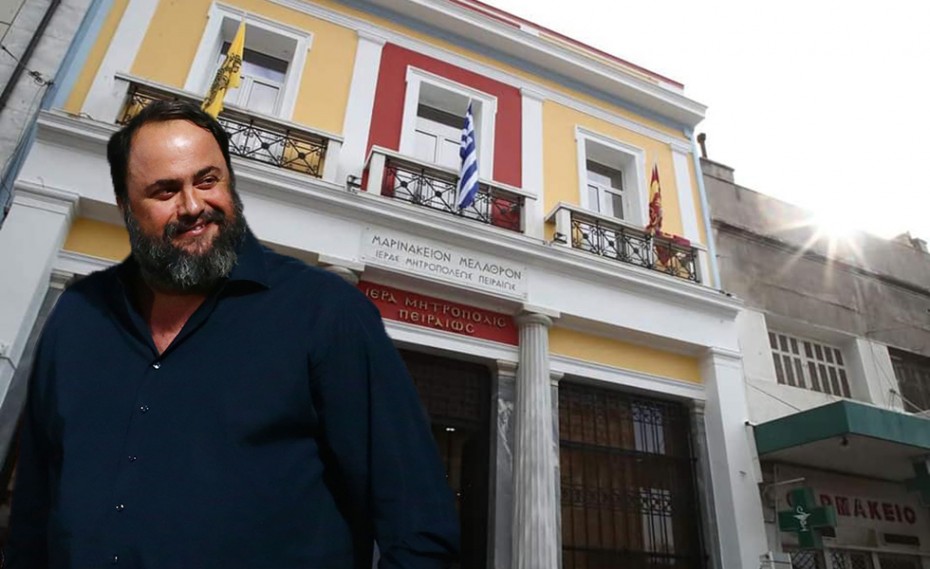
Δείτε: «Κατεβαίνοντας τον Κηφισό το ηλιόλουστο κυριακάτικο πρωινό, το ραδιόφωνο του αυτοκινήτου παίζει τα παιδιά του Πειραιά. Μελωδία και στίχοι που σε ταξιδεύουν σε άλλες εποχές.
Τρελή να με ‘χει κάνει, όσο τον Πειραιά».
Οι στίχοι του Μάνου Χατζιδάκι τραγουδισμένοι από τη φωνή της Μελίνας Μερκούρη, θα είναι πάντα επίκαιροι. Ιδιαίτερα τα τελευταία χρόνια, που ο Πειραιάς αλλάζει καθημερινά.
Μία πρώτη στάση μπροστά από το Δημοτικό Θέατρο, επιβεβαιώνει του λόγου το αληθές, καθώς κάθε γωνία ελκύει το βλέμμα. Τελικός προορισμός είναι η Φίλωνος, ο δρόμος πίσω από τον Καθεδρικό Ναό Αγίας Τριάδας Πειραιά.
Άνοιξε τις πύλες του μετά από μία σεμνή τελετή, έντονα συγκινησιακά φορτισμένη, καθώς το υπέροχο κτήριο είναι αφιερωμένο στη μνήμη του Μιλτιάδη Μαρινάκη, πατέρα του κ. Βαγγέλη Μαρινάκη.
Άνθρωποι με τέτοια ενσυναίσθηση και διάθεση προσφοράς είναι εκείνοι που βάζουν ένα λιθαράκι για να ομορφαίνει κάθε ημέρα η πόλη του Πειραιά».
14. ΠΡΟΣΕΧΩΣ ΙΣΩΣ ΓΡΑΨΟΥΜΕ ΞΑΝΑ “2 ΛΟΓΙΑ” ΚΑΙ ΓΙ’ ΑΥΤΟ ΠΑΡΑΚΑΤΩ!
Τουρκία: Θα μπορούσε ο Ερντογάν να χρησιμοποιήσει μια ψεύτικη επίθεση για να ξεκινήσει πόλεμο με την Ελλάδα;
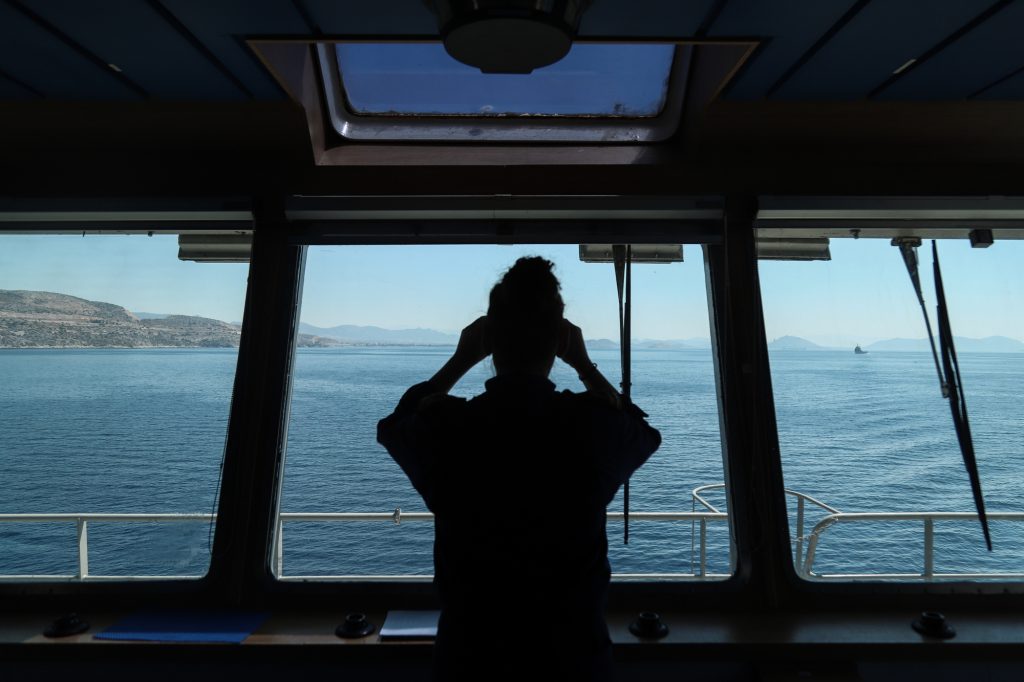
Το κόστος της σιωπής της Δύσης εν όψει της τουρκικής ψευτοανησυχίας για την τρομοκρατία: Στις 13 Νοεμβρίου 2022, βόμβα ταρακούνησε ένα εμπορικό κέντρο στη Μεγάλη Οδό του Πέραν στην Κωνσταντινούπολη. Μέσα σε μια μέρα, τούρκοι αξιωματούχοι είπαν ότι είχαν τον ύποπτο τους: την Αχλάμ Αλμπασίρ, μια γυναίκα από τη Συρία για την οποία οι τουρκικές αρχές ισχυρίστηκαν ότι πήρε τις εντολές της από Κούρδους της Συρίας στο Κομπάνι.
Στη συνέχεια, η αστυνομία την «παρέλασε» μπροστά από τους φακούς και τις κάμερες των φίλα προσκείμενων στον Ρετζέπ Ταγίπ Ερντογάν ΜΜΕ, με τη γυναίκα να φορά ένα φούτερ που έγραφε «New York».
Διαβάστε επίσης: Παρίσι ή Ρώμη; Ποιος κερδίζει το συμβόλαιο για τις κορβέτες του Πολεμικού Ναυτικού
Σε περίπτωση που οι Τούρκοι πολίτες αποδεικνύονταν… υπερβολικά ανόητοι για να λάβουν το μήνυμα, ήρθε προς επίρρωση ο υπουργός Εσωτερικών, Σουλεϊμάν Σοϊλού, και έβαλε στη θέση των συνενόχων τις ΗΠΑ.
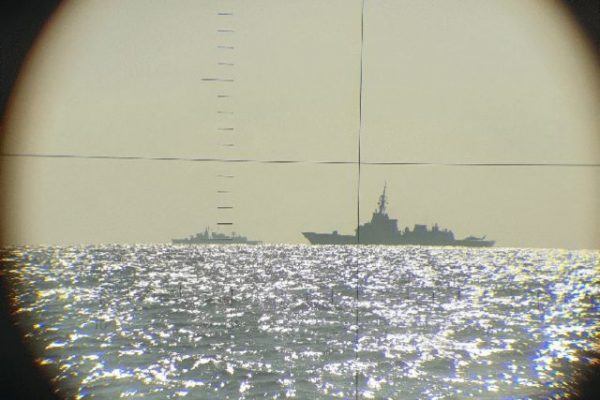
Καμιά απόδειξη
Σύμφωνα με τον δρ. Μάικλ Ρύμπιν, πρώην στέλεχος του αμερικανικού Πενταγώνου και συνεργάτη του American Enterprise Institute, δεν υπάρχει καμία απόδειξη, πέραν της τουρκικής επιμονής, ότι η Αλμπασίρ έχει σχέση με Κούρδους της Συρίας. Πράγματι, τα στοιχεία που τη συνδέουν με τον υποστηριζόμενο από την Τουρκία Ελεύθερο Συριακό Στρατό (FSA) είναι ισχυρότερα.
Μάλλον, φαίνεται ότι ο Ερντογάν χρησιμοποιεί τη βομβιστικ
ή επίθεση ως πρόσχημα για να πραγματοποιήσει μια προσχεδιασμένη επιχείρηση για να υπονομεύσει το δημοκρατικό κουρδικό πείραμα στη βορειοανατολική Συρία. Στον απόηχο της επίθεσης στην Κωνσταντινούπολη, τουρκικά πολεμικά αεροσκάφη έχουν επανειλημμένα χτυπήσει στόχους στην κουρδική ζώνη της Συρίας, σκοτώνοντας όχι μόνο πολιτικούς αξιωματούχους αλλά και πολλούς άλλους πολίτες.
Αδικαιολόγητες οι ενέργειες της Τουρκίας
Η «καραμέλα» ότι οι Συριακές Δημοκρατικές Δυνάμεις είναι, από τη φύση της εξέλιξής τους από το Εργατικό Κόμμα του Κουρδιστάν (PKK), μια τρομοκρατική ομάδα, δεν δικαιολογεί τις ενέργειες της Τουρκίας για δύο λόγους.
Πρώτον, το PKK έχει εξελιχθεί με τα χρόνια, όπως και η ίδια η Τουρκία. Σήμερα, η Τουρκία του Ερντογάν είναι αγνώριστη σε σχέση με αυτό που ήταν πριν από δύο δεκαετίες. Το ίδιο ισχύει και με το PKK. Πολιτικά, πνευματικά και πολιτιστικά, δεν είναι η ίδια οργάνωση.
Δεύτερον, ενώ το Στέιτ Ντιπάρτμεντ δραστηριοποιείται στον αυτόματο και ορισμένοι αναλυτές δεξαμενών σκέψης επιδιώκουν να είναι πιο Τούρκοι από πολλούς Τούρκους στον εξοστρακισμό του PKK, είναι χρήσιμο να θυμόμαστε ότι ο Τουργκούτ Οζάλ, ο οποίος κυριάρχησε στην Τουρκία από το 1983 έως το 1993, ήταν πρόθυμος να συνάψει ειρήνη με την ομάδα. Πριν από το θάνατό του το 1993, είχε στείλει προτάσεις στον ηγέτη του PKK, Αμπντουλάχ Οτσαλάν και φαινόταν έτοιμος να διαπραγματευτεί τον τερματισμό της κουρδικής εξέγερσης.
Ο Λευκός Οίκος και πολλοί ευρωπαίοι διπλωμάτες μπορεί να πιστεύουν ότι μπορούν να κάνουν τα στραβά μάτια στη συνεχιζόμενη επίθεση της Τουρκίας στη βόρεια Συρία. Άλλωστε, οι Κούρδοι δεν είναι κράτος και άρα δεν έχουν θέση στο διπλωματικό τραπέζι. Εκτός οπτικού πεδίου σημαίνει και εκτός της σκέψης μας. Το πρόβλημα με μια τέτοια λογική δεν είναι μόνο η ηθική της διαστροφή.
Αντίθετα, είτε κατηγορούν τους περιβαλλοντολόγους ότι συμμετείχαν σε μια τεράστια τρομοκρατική συνωμοσία μετά τις διαδηλώσεις στο πάρκο Γκεζί , είτε υπερβάλλοντας σχετικά με τη συνενοχή των γκιουλενιστών στο υποτιθέμενο αποτυχημένο πραξικόπημα του 2016 είτε αναζητούν πρόσχημα για να επιτεθούν στο Ιράκ ή τη Συρία, ψευδείς κατηγορίες εναντίον εχθρών ως πρόσχημα για αστυνομική ή στρατιωτική δράση έχουν γίνει κοινοτοπίες για την Τουρκία.
Ο λόγος είναι απλός: Ο Ερντογάν έχει τελειοποιήσει τέτοιες τακτικές.
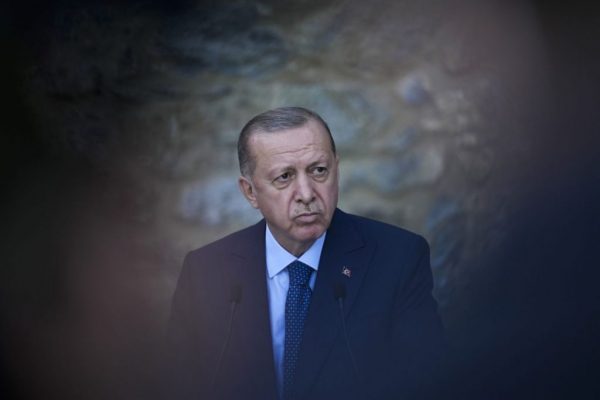
Ο «φάκελος» Ελλάδα
Όπως λέει ο Ρούμπιν, αυτό μας φέρνει στην Ελλάδα. Κατά τη διάρκεια των δεκαετιών, η Τουρκία κατηγόρησε επανειλημμένα την Ελλάδα για τρομοκρατία. Καθώς ο Ερντογάν επιτίθεται στον γείτονά του στο ΝΑΤΟ καθώς επιδιώκει να επανασχεδιάσει τον χάρτη του Αιγαίου και να επεκτείνει την Αποκλειστική Οικονομική Ζώνη της Τουρκίας, θα χρειαστεί ένα πρόσχημα για στρατιωτική δράση.
Εάν η Ευρώπη επιτρέψει στον Ερντογάν να ξεφύγει με μια ψευδή κατηγορία εναντίον των Κούρδων της Συρίας για να δικαιολογήσει μια τουρκική αρπαγή γης νότια των συνόρων του, δεν είναι παράλογο να εξετάσουμε ένα άλλο σενάριο που οδηγεί σε αρπαγή γης δυτικά των συνόρων: μια βόμβα εκρήγνυται στη Σμύρνη, Αλικαρνασσό ή Μαρμαρίδα. Μια μέρα αργότερα, ο Σοϊλού θα παρελάσει έναν ύποπτο με φούτερ «Αθήνα», ισχυριζόμενος ότι ομολόγησε ότι ενήργησε κατ’ εντολή Ελλήνων εθνικιστών.
Σύμφωνα με τον αναλυτή, η Ευρώπη μπορεί τότε να εκδώσει τις αρνήσεις της, αλλά τον Ερντογάν δεν θα τον νοιάζει. Έχει συνηθίσει στο ότι η Δύση αποδέχεται τα τουρκικά πρότυπα αποδεικτικών στοιχείων ή χώρες όπως η Σουηδία να ταπεινώνονται για να τον ευχαριστήσουν.
Αυτό θα είναι λάθος υπολογισμός από την πλευρά του – το ευρωπαϊκό σθένος είναι ισχυρότερο από ό,τι μπορεί να υποδηλώνει το σύνδρομο της Στοκχόλμης που εκφράζει τη Σουηδία του 2022. Ωστόσο, οι πόλεμοι συχνά ξεκινούν εξαιτίας τέτοιων λανθασμένων υπολογισμών. Γι’ αυτό η σαφήνεια είναι τόσο σημαντική. Η αποκοπή της τουρκικής επιθετικότητας εναντίον των Κούρδων σήμερα μπορεί να αποτρέψει μια θανάσιμη σύγκρουση με την Ελλάδα καθώς πλησιάζουν οι εκλογές στην Τουρκία.
15. ΣΥΝΕΧΙΖΟΥΝ ΟΙ ΤΟΥΡΚΟΙ ΝΑ ΑΝΑΠΑΡΑΓΑΓΟΥΝ ΒΡΩΜΙΕΣ ΚΑΤΑ ΤΟΥ ΠΑΛΑΤΙΟΥ, ΛΟΓΩ ΑΣΦΑΛΩΣ ΤΗΣ ΦΙΛΕΛΛΗΝΙΑΣ ΤΟΥ ΝΕΟΥ ΒΑΣΙΛΕΩΣ ΚΑΡΟΛΟΥ!.. ΚΡΙΜΑ, ΡΕ! ΑΛΛΑ ΤΙ ΝΑ ΠΕΡΙΜΕΝΕΙ ΚΑΝΕΙΣ ΑΠΟ ΑΗΔΕΙΣ ΛΑΚΕΔΕΣ, ΠΟΥ ΚΑΠΟΤΕ… “ΕΚΛΑΙΓΑΝ ΣΤΗΝ ΠΟΔΙΑ” ΤΗΣ ΕΛΙΣΣΑΒΕΤ!..
Eylül ayında 96 yaşında hayatını kaybeden İngiltere Kraliçesi 2. Elizabeth’in nerdeyse 60 yıldan fazla nedimeliğini yapan Leydi Susan Hussey bir skandala imza attı. Aynı zamanda Prens William’ın vaftiz annesi de olan Hussey, ırkçı sözleri sonrası görevinden istifa etti.
2/11
83 yaşındaki Leydi Susan Hussey, Sistah Space hayır kurumu başkanı Ngozi Fulani’yi Salı günü saraydaki bir resepsiyonda defalarca sorguladıktan sonra istifa etti.
3/11
Buckingham Sarayı’nda düzenlenen bir resepsiyonda, İngiliz olduğunu belirtmesine rağmen Fulani’ye ısrarla Afrika’nın hangi bölgesinden olduğunu soran Hussey’in bu ırkçı tavrıyla başını yaktı.
4/11
Buckingham Sarayı’ndan bir sözcü yaptığı açıklamada, söz konusu olayı son derece ciddiye aldıklarını ve tüm ayrıntıları belirlemek için derhal soruşturma başlattıklarını belirterek, şu ifadeleri kullandı:
GÖREVİNDEN İSTİFA ETTİ
“Bu durumda kabul edilemez ve son derece üzücü yorumlar yapıldı. Konuya ilişkin Fulani’ye ulaştık ve dilerse yaşadıklarını tüm ayrıntılarıyla bizzat ele almak için kendisini davet ediyoruz. Öte yandan ilgili kişi, neden olduğu incinme için derin özürlerini ifade etmek istedi ve derhal geçerli olmak üzere onursal görevinden çekildi.”
6/11
TOPLULUMUZDA IRKÇILIĞA YER YOK
Fulani İngiliz basınına yaptığı açıklamada, söz konusu sorunun bir kişiden daha büyük olduğunu belirterek, “bunun kurumsal ırkçılık” olduğunu ifade etti. Fulani, “Olaydan sonra şoktaydım ve beni tanıyan herkes bu tür saçmalıkları kabul etmediğimi bilir. Ama pek çok şeyi düşünmem gerekiyordu. Bir siyahi olarak kendimi bir şeyler söylemek istediğim bir yerde buldum ama olanlar otomatik olarak benim hatam olarak görülecekti” dedi.
7/11
FULANİ TWİTTER’DAN PAYLAŞTI
“Sistah Space” adlı aile içi taciz mağdurlarına yönelik bir destek grubunun yöneticisi olan Fulani, Twitter’dan “Lady SH” olarak bahsettiği Hussey’in kendisine yaklaştığını, yaka kartını görmek için saçına dokunduğunu ve daha sonra ısrarla “Afrika’nın hangi bölgesinden” olduğunu sorduğu ifadelerini paylaşmıştı.
8/11
Fulani, Hussey’in ısrarı karşısında “Hanımefendi! Ben bir İngiliz vatandaşıyım, ailem buraya 1950’lerde geldi” dediğini ve Hussey’in kendisine “Ah, sonunda oraya varacağımızı biliyordum, sen Karayiplisin!” dediğini belirtti. Fulani, Hussey’in bu söylemi sonrası “Hayır hanımefendi, ben Afrika kökenli, Karayip kökenli ve İngiliz uyrukluyum” dediğini aktardı.
9/11
ELİZABETH’İN YAKIN ARKADAŞI OLRAK İLAN EDİLMİŞTİ
Hussey, 8 Eylül’de hayatını kaybeden Kraliçe’nin yakın bir sırdaşıydı ve geçen yıl hayatını kaybeden Edinburgh Dükü Prens Philip’in cenazesinde Covid-19 kısıtlamaları nedeniyle Kraliçe’ye eşlik eden tek kişi olmuştu.




